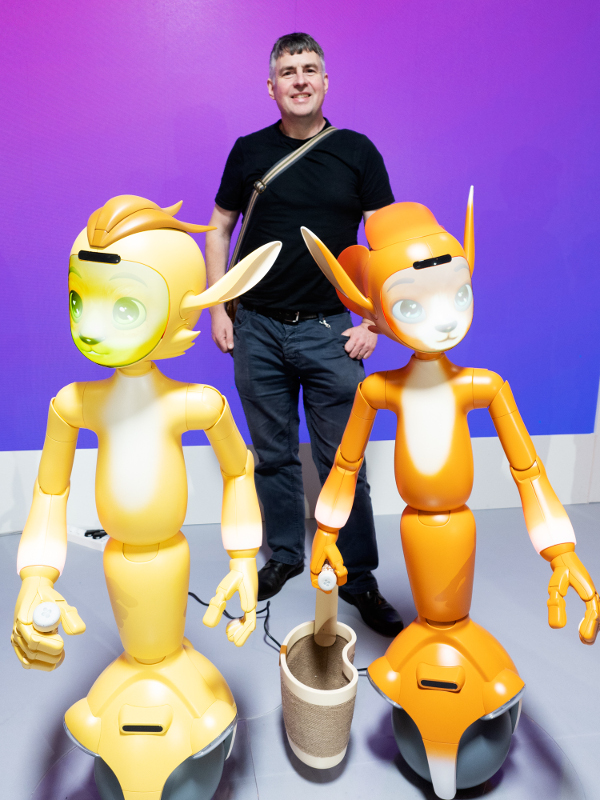When you think about humanoid robots, what countries do you think of? You might think of Japan, well known as a powerhouse of robotics, the likes of Asimo and Aibo. Maybe you think of American companies like Boston Dynamics with Atlas. You might not think of France. Yet if you consider the numbers of humanoid robots worldwide it is almost certainly French robots that are in the majority. There are thousands of Nao & Pepper robots out there. Designed and built by Aldebaran, which became Softbank Robotics Europe and which is now Aldebaran again. Now, I’m in Paris again and Jérôme Monceaux, the mind behind Nao & Pepper, has a new company, Enchanted Tools, with a new robot that he’s ready to show to the world.
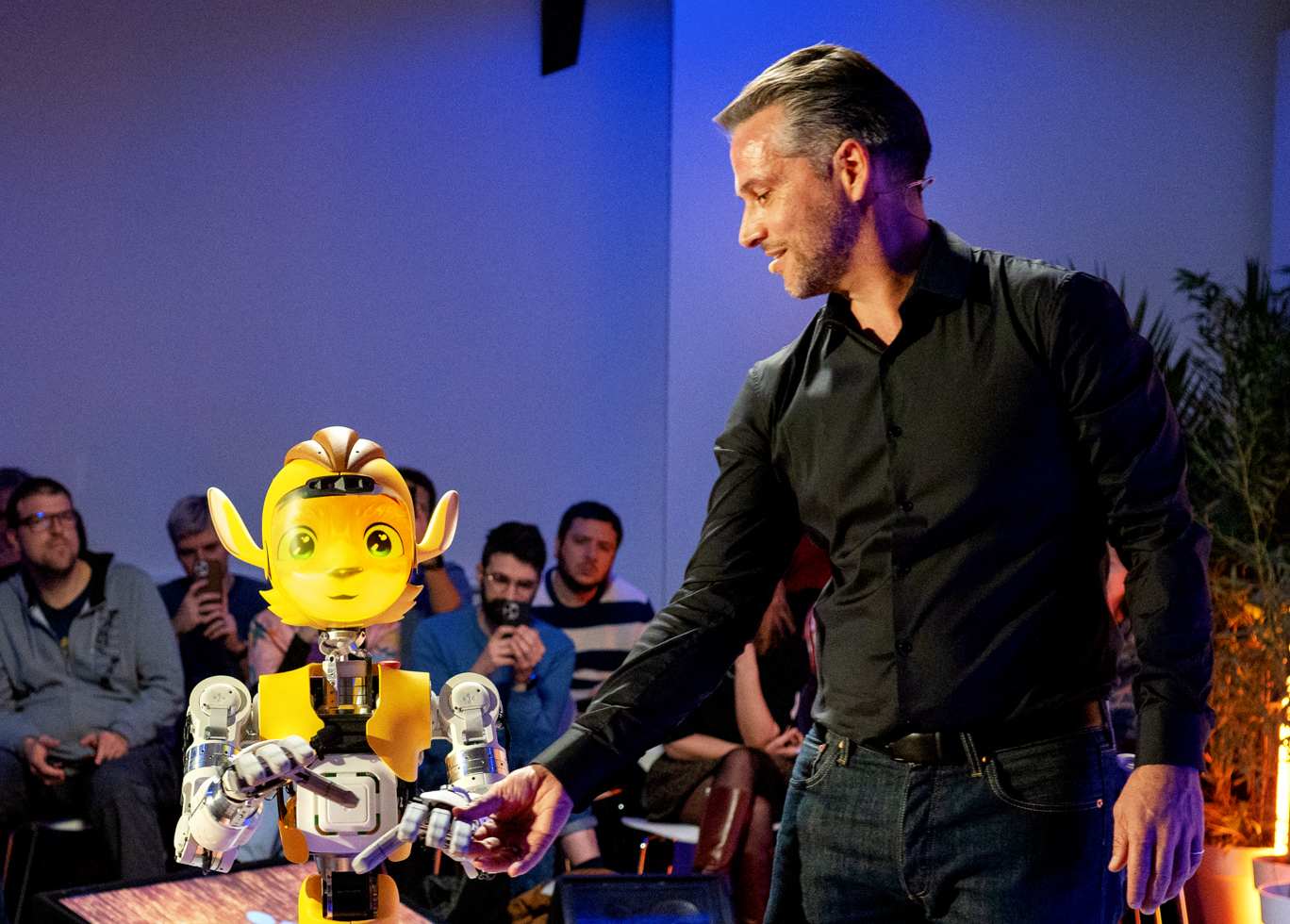
Ghene & I almost didn’t make it. We’d planned a leisurely arrival in Paris, a chance to freshen up and change into smarter clothes more worthy of an event in France and then a gentle stroll to the venue on Quai de Valmy. Instead we got 3 hours of delay in London in a crowded departure lounge due to an issue with the overhead power lines and then a frantic dash from Gare du Nord in t-shirts that were only just presentable. Luckily we weren’t too late and we arrived in time for the start of the event.
First, Richard Malterre took the stage to welcome the 100 or so attendees and then introduce, Jérôme Monceaux, the CEO of Enchanted Tools. Jérôme, made an allusion to the long history of humanoid robots in France, pointed to the company logo on the projected screen behind him and with a tap of the screen we were off on an animated adventure. We meet the Mirokai a benevolent alien race living far across the Universe who have been watching over the human race for centuries. Now one of them approaches a portal and is transported somewhere…
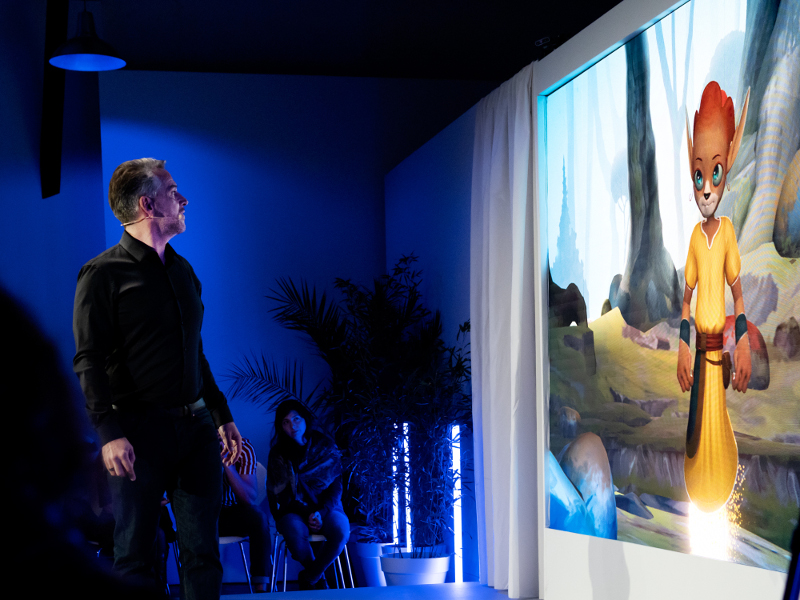
Jérôme returns to the stage and explains that we need a body for the Mirokai to inhabit not one of flesh & bone, but metal and plastic that their “enchanters” have created. Jérôme beckons to a curtained off area in front of the stage. There is a perceptible hush as the audience waits to see what might emerge. At first we can see only the top, a slightly feline face projected on a cartoonish head. As the figure moves along a catwalk towards the stage we see more, 2 arms with 3 fingers and a thumb, and then that the figure is balancing on a ball. I’ve seen several experimental ballbots but this is the first time I’ve seen one on a commercial robot - something that I think is yet another first for Jérôme and his team.
The robot appears very stable as it rolls towards Jérôme. Jérôme shows us a small cyclindral object which he calls a “rune”. He explains that this is designed to be grasped and tracked by the robot. He gently waves the rune in front of the robot and we can see it move to track the rune. When the rune is held towards the robot, it, with only a slight hesitation, grasps the rune and holds it. The importance of the rune is that the robot won’t attempt to grasp other things that we might not want it to, such a hot cup of coffee. There are various accessories with runes a handles: a tray, a small basket and a trolley. Jérôme moves the robot around on stage simply by pushing it - the robot has no trouble maintaining its balance.
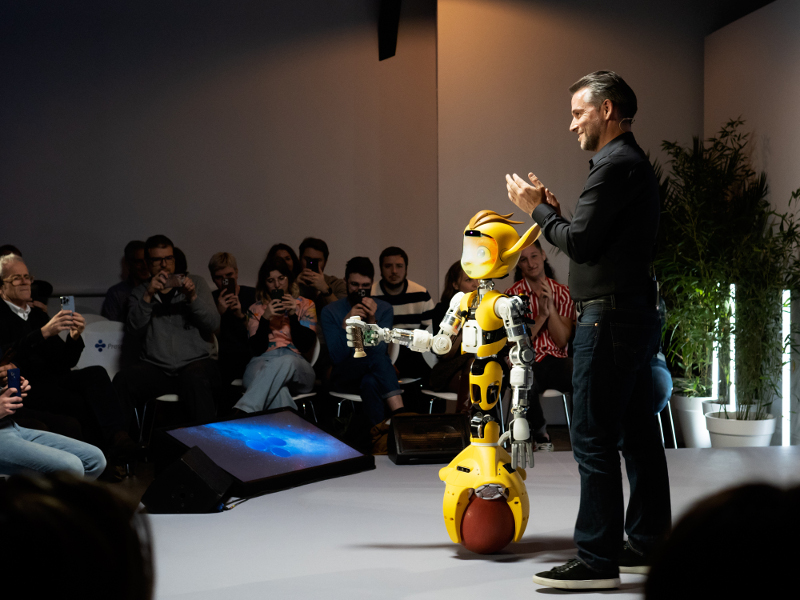
It’s clear from the design and the animated cartoon-like face that this robot is designed to be approachable and have a personality. Jérôme tells us that it’s not enough for a robot to be a blank slate, only hardware. It needs to be acceptable and relatable to the humans around it. This is why Enchanted Tools has put a lot of effort into character design and creating a back-story for the robot. The animated introduction was made in collaboration with Gaumont Animation the oldest film company in the world and experts in animation.
This brings us to the first application of the Miroki robot - hospitals. Jérôme details the huge number of things that need to be moved between places (not including patients) and the amount of time nurses spend both transporting objects and looking for misplaced objects. With its ballbot design and 3D vision Miroki can move through crowded spaces carrying items on a tray or in a basket. It can also be moved out of the way just by pushing it - it won’t fall over. The robot is capable of SLAM (Simultaneous Location and Mapping) and so it is capable of navigating multi-room locations, like hospitals. It does sound like a sensible application and by avoiding moving heavier and more difficult items (like patients!) they’re reducing the risk of the robot causing harm.
In only 12 months, Enchanted Tools raised 15 million euros in seed funding, assembled a team of 50 engineers, and created a character design, the animated film we saw at the beginning, and the robot prototype that implements the character design - truly an impressive feat.
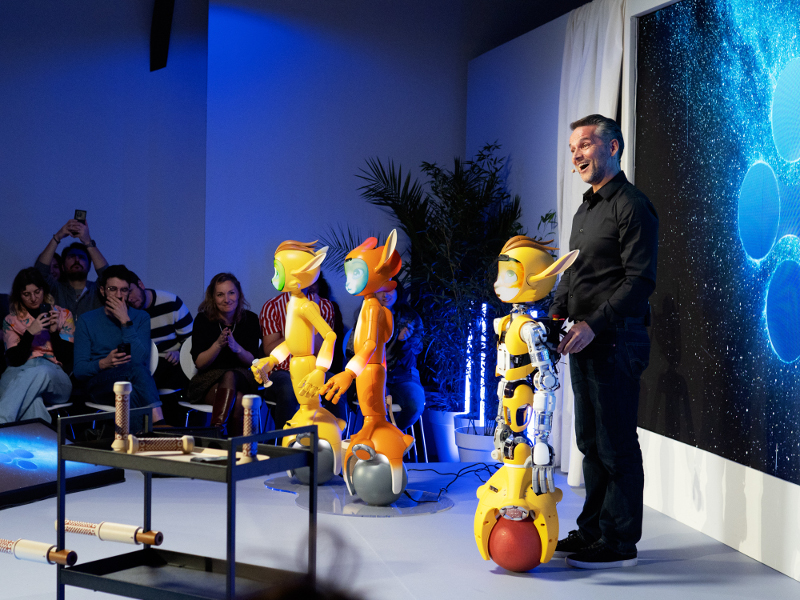
The robot prototype weighs about 30kg and is about 130cm high. It has 28 degree of freedom (motors or joints that can move) - by contrast Nao has 25. The other specifications are also quite impressive:
- 2 arms with opposable thumbs
- 2 RGBD depth cameras (3D vision)
- 2 CPUs with 2 GPUs
- 12 time of flight cameras (for measuring distance to things)
- 6 ultrasound sensors (also for measuring distance)
- 4 microphones
- 3 IMUs (inertial measurement units)
- 8 hour battery life

Obviously, such a robot is no use if people are unable to use it. Enchanted Tools will provide a simple “if this, then that” style rules system (think of something like IFTTT) so that people can describe where objects should be located (so the robot can put them back if it finds them in the wrong place) and where they should be transported to.
The robot should be available in 2025 for approximately 30,000 euros. In 10 years time Enchanted Tools expects to have produced 100,000 Miroki robots. It’s fair to say they have a grand vision and I can’t wait to see them succeed.
